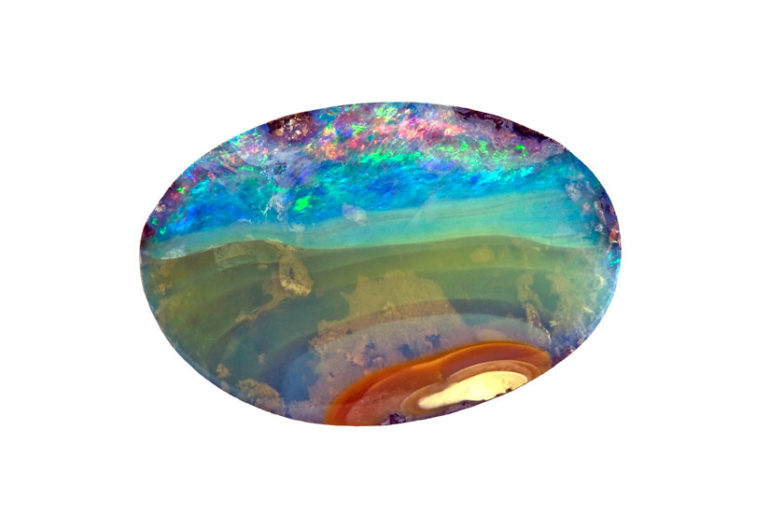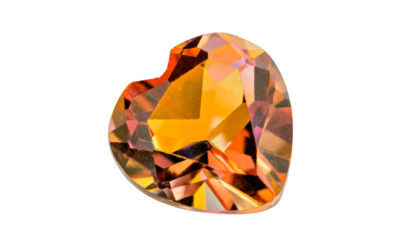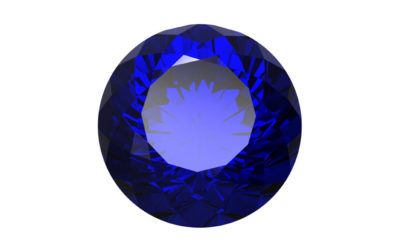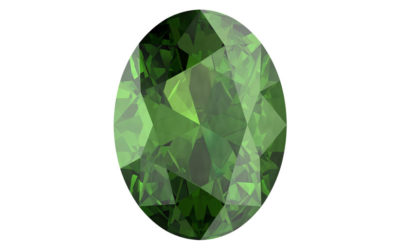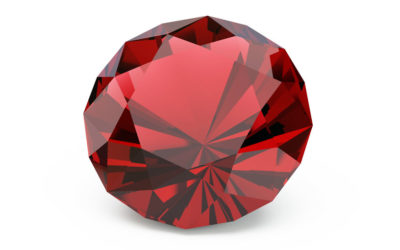October babies get two options for which they can claim as their choice birthstone.
The opal and the tourmaline are both quite unique in the collection of birthstones. October babies may even want to make it easier on themselves and choose both! What makes them quite interesting are how they both literally have a rainbow of color and shade combinations to choose from.
Speaking of rainbows, it is a legend that both of the birthstones traveled to earth via a trip, which involves a rainbow. Tourmaline’s color is dependent on the trace elements that compose its chemical composition. Opal tends to diffract light to show a spectrum of more than one color.
Given how varied they are, October is an ideal month to be a picky birthstone chooser. You have a full spectrum of shades to choose from.
The rainbow of opal
Looking at the opal gem is like looking through the lens of a kaleidoscope. The colors seem to break apart in a beautiful and poetic clash of different shades. Many admirers have tried to use poetry to capture the almost mystical nature of the gem. It has been compared to quite a few things in the past, including fireworks.
The gem represented hope and love for those who lived in Ancient Rome. The gem was given the name “opalus,” which means “precious stone.” Pliny, a Roman scholar, wrote, “Some opali carry such a play within them that they equal the deepest and richest colors of paint. Others… simulate the flaming fire of burning sulphur…and even the bright blaze of burning oil.” (Pliny the Elder)
The affordability of opal
One point of interest for the birthstone is that while it is one of the most celebrated and sought-after gems, it is also one that can be purchased for a more modest price. The gem is widely available, especially the calibrated white opal cabochon. It’s considered to be the most familiar of the gem. This is not to say that the gem isn’t of value. In fact, the much rarer black opal, with its beautiful shine, can easily compete with sapphires, rubies, and even emeralds with its appeal.
As for the rainbow in which you can pick from, you can choose from the white, black, red/orange/yellow, and pink and blue opals. The choices for you are quite unlimited. And if you’re on a budget, you need no worry about breaking your bank to get something as alluring as, say, ruby or emerald.
Keep your opals exposed to moisture
You should never put the birthstone in an airtight box. Much like the pearl gem (the birthstone of June), putting it in a box where it can’t “breathe” will cause the gem to dry up and eventually crack. The best way to keep them from cracking is just to let them breathe inside an open jewelry box. You may even want to apply light oil on it ever so often.
The lore of the opal
Like many of the other birthstones, the opal has its deep well of lore attached to it. The stories go back as far as earlier civilizations. Jewelry, back then, was not just worn for decoration but also as a talisman to protect against spiritual and human forces.
Women with blonde hair had worn the opals in a necklace in order to keep their hair color intact. It was once believed that the gem was worn to make the wearer invisible. Our early ancestors considered them to be magical and provided the wearer with a view of limitless possibilities. It was also considered to be a magnifier of one’s emotions and their wishes.
Within the medieval period of Europe, it was actually avoided! It was considered evil because it has a similarity to eyes like that of a cat—which was also considered evil. (Times have changed obviously.) This was called fear of the evil eye.
History has taught us that multiple cultures had their own apprehension towards the malevolent stare. In short, the fear comes from paranoia that the evil eye will bring one harm and misfortune.
The good news is that Queen Victoria was able to slowly but surely changed the misconception about opals. After all, she was a big fan of them and wore them herself.
The rainbow of tourmaline
The second birthstone of October also comes in a rainbow of options. October babies can get them in blue, pink, shades of red, and even green! The colors have confused people more than once.
There’s a story of a Spanish conquistador who found a green variant of the gem, washed away the dirt, and assumed it was an emerald. He was convinced of it being an emerald until scientists were able to identify the difference later on in the 1800s.
The colors are so varied that there are even rare neon variants like the Paraíba tourmaline.
The root of the word “tourmaline”
The birthstone’s name comes from the Sri Lankan word “turomalli,” which means “the stone of mixed colors.” The gem got its name from Dutch merchants who came in contact with gems that were found in Ceylon (now Sri Lanka). It was once believed that the multiple colors came from the gem traveling within a rainbow and in turn absorbing some of the colors.
The lore of the tourmaline
The second October birthstone is known for strengthening the body and the spirit. In particular, it supposedly helps our lymph, blood and nervous systems. For our blood, it helps in circulation and keeping health.
The gem is also thought to help bring about creativity to one’s mind. Much like a muse, the gem was used as a talisman by writers and artists. There were even references to the belief that tourmaline has energy that healers considered well-suited for men.
Green tourmaline supposedly helps in affairs involving money.
The root of the word “opal”
Coming from the Greek term “opallos,” the word opal means “to see a change.” The meaning makes sense given how opals are like fingerprints. They all have their own unique design. They can be quite a few different colors—from milky white (like a pearl) to red, yellow, or even green-blue.
During ancient times, the gem was considered the “Queen of Gems,” due to all the collective colors of other gems in it. It was revered for its color shifting abilities.
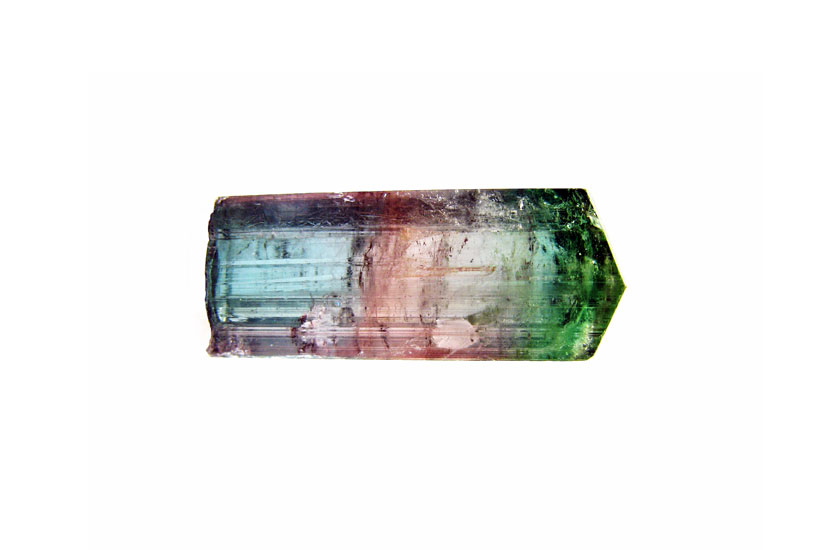
Tricolor tourmaline gemstone
Tourmaline and opal: Sister rainbow gems
Putting tourmaline with the opal for the month of October makes sense. They both have a rainbow-rich charm. Just like with opals, this birthstone is able to show more than one color within the same stone. As a matter of fact, the ones that show more than one color tend to have a higher value. Collectively, these two gems make October the most radiant month.
Both of the birthstones have a complicated crystal structure. The tourmaline has to be cut with great precision in order for all the colors within be caught by the human eye in one glance.
The gem is mainly found in the United States, East Africa, Brazil, and Afghanistan.
In contrast, the opal takes many years of natural formation to create. They’re created with a solution of water and silicon dioxide that forms into a silica deposit as water evaporates. Layers of the deposit filling the earth’s cracks and voids produce the gem.
The precious versus common opal
The birthstone comes in two classifications—the precious opal and the common opal.
Diffracted light wave through the precious gem produces an alluring spectrum of colors.
Common opals, on the one hand, have no color. The gem consists of compacted tiny silica spheres. This prevents light to refract.
The mystery of opal formation
Science has yet to pinpoint one single model that can explain the different ways in which the birthstone is created. There are many types of opal, and they vary greatly in how they’re formed based on the location and the minerals involved in their creation.
This doesn’t mean, however, that there aren’t any working models that can help us understand them.
There’s the weathering model, which explains that opals form in desert areas that experience intense rainfall during the rainy season.
Rainwater washes away silica, a compound of oxygen and silicon, from sandstones. This combination flows and rests in the rock crevices and faults that are below the water table. During summertime, when the sun lowers the water table, the deposits heat up and leave tiny silica spheres. The spheres layer over time and the opal is formed.
Opal: The misunderstood birthstone
For all its beauty, there are persistent beliefs that have kept some from embracing the gemstone.
It is believed that the superstition may have begun with the gem cutters who were upset with the birthstone.
They tend to fracture quite easily when being set and cut. Since they were responsible for the gem being made perfect, the pressure and failure of producing the desired end result at times may have led them to call the stone unlucky.
Another contribution to the misconception of the opal can be traced back to Sir Walter Scott’s novel Anne of Geierstein. In the story, the birthstone was responsible for breaking the spell that dissolved the enchantment cast on her. (Anne of Geierstein)
The popular Sun God Opal
The Sun God Opal is part of a popular gem collection located at Chicago’s Field Museum.
The gem is popular due to its unique characteristics. It comprises of a human face that’s been carved into a 35 CT cabochon. It is surrounded with gold flames. (Sun God Opal)
The opal was owned by the Hope family, who at one time also owned a diamond with a notorious cursed provenance.
The beautiful piece of artwork was reportedly discovered in Mexico during the 16th century.
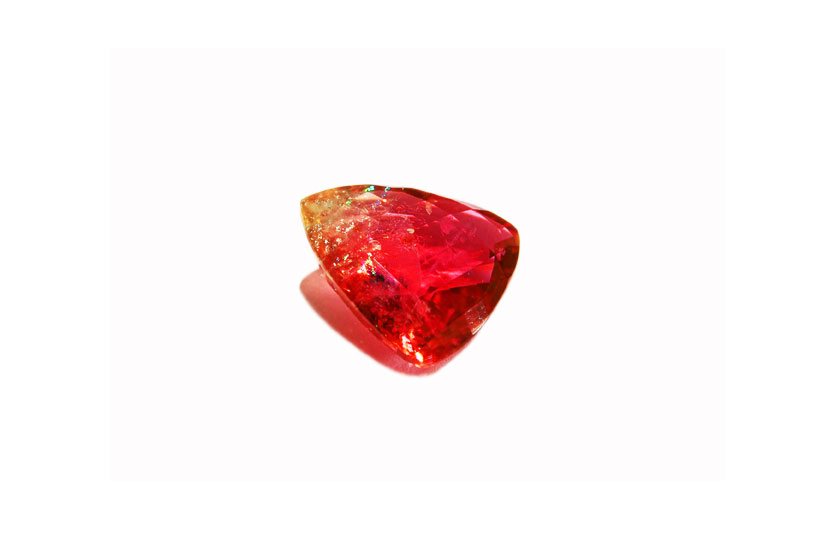
Bichromatic tourmaline gem
Tourmaline: The deceptive gem
The bi-colored and at times parti-colored birthstone has a feature known as color zoning. This term describes a color that is unevenly distributed within a gem. In many cases, especially with other gems, this isn’t a highly-desired quality. For some jewelers and gem enthusiasts, it looks low-quality and ugly. However, this is a sought-after quality in this birthstone.
The multiple-color nature of the gem has deceived people in the past. For instance, it was believed as one of the Russian crown jewel’s rubies. Even the Caesar’s Ruby pendant wasn’t a real ruby but a rubellite tourmaline.
The importance of cut in tourmalines
You’ll want to take the cut as a factor when choosing a piece of the October birthstone. More often than not, they’re cut into lengthy rectangular shapes. This, in particular, helps bring out the pleochroic quality of the gem.
Big and great quality gems are priced high per carat. For those who can’t afford them, consider looking for the facet rough gemstones.
Both the opal and the tourmaline create ideal gifts for October babies. It may be best to ask them their favorite color when choosing one! You’re bound to find a version of either of the gems that’ll satisfy even the pickiest of them. You may also want to consider their personality if you have to choose between the two gems.
Opals tend to be connected with hope, innocence, and purity. Tourmalines, on the other hand, have an intimate connection with nature and the human race.
References
Edinburgh University Library. “Anne of Geierstein” ED.ac.uk, www.walterscott.lib.ed.ac.uk/works/novels/geierstein.html (Accessed December 24, 2018)
Encyclopaedia Britannica. “Pliny the Elder | Biography, Natural History, & Facts | Britannica.com” Britannica.com, www.britannica.com/biography/Pliny-the-Elder (Accessed December 24, 2018)
GIA. “Sun God Opal – GIA 4Cs” GIA.edu, 4cs.gia.edu/en-us/blog/tag/sun-god-opal/ (Accessed December 24, 2018)

